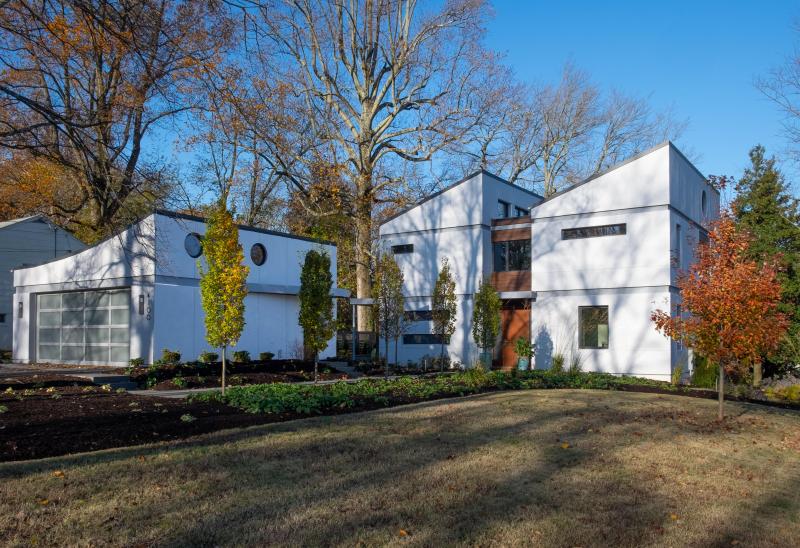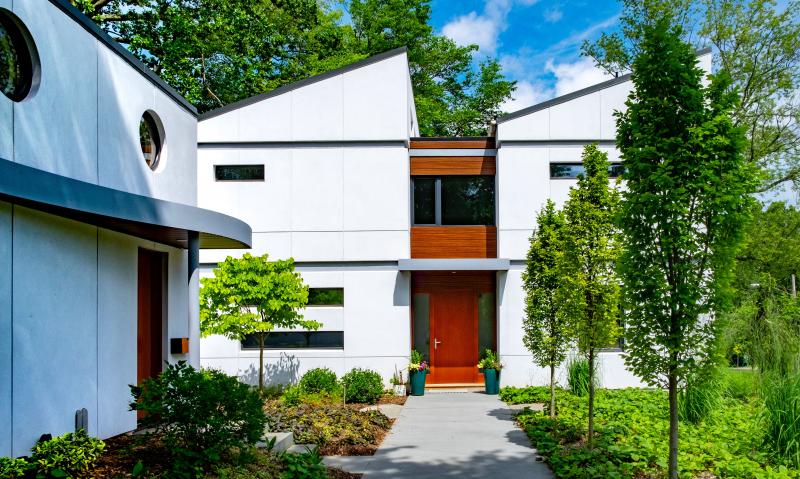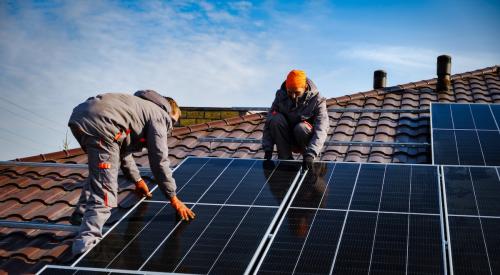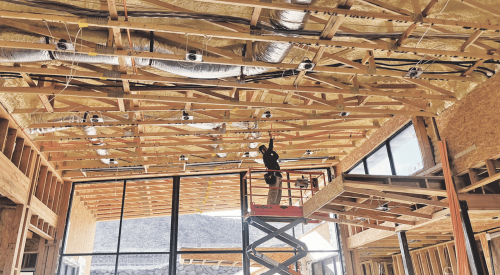This net-zero energy home, designed with passive house principles, was the first in Fairfax, Va. and the first for architect David Peabody.
Peabody achieved his passive house consultant certification in 2009, dedicating his work to reduce the environmental impact of the built environment. But this home would be his first net-zero energy residence, and his expertise was a hit with the homeowners who were just as committed to sustainability; in fact, they were the ones who pushed for a net-zero energy home.
Each design and material choice for the residence had two purposes: to look good and perform better.
[ Read More: PROJECT OF THE WEEK: PRODUCTS’ HIGH PERFORMANCE DEMONSTRATION PROJECT WRAPS UP ]

Landscape architect firm Moody Graham planted nearly 40 different species of native plants, and the front yard became a pollinator garden with black-eyed Susans, coneflowers, and butterfly weed. Native buffalo grass, which requires no mowing, replaced the previous traditional bluegrass lawn. Moody Graham says the heavily planted garden, an integrated dry well, and a permeable driveway help to limit rainwater runoff.
The home’s design features a clean, industrial look, and configuring the home in a standard cube shape allows for the correct aesthetics and minimizes energy loss. The cube form uses the least amount of surface area, resulting in reduced heat transfer. Simple exteriors and silhouettes also provided some money-saving solutions.
Sloped roofs help break up the mass on the main house and detached garage, but that design choice was most beneficial for a 20-kilowatt solar array for the home that would later be installed by the owners. Solar orientation was one of the key challenges for the design because of the property’s location on a relatively small corner lot. Ultimately, the array produces enough electricity to power the residence, a hot tub, and charge an electric vehicle.
[ Read More: PROJECT OF THE WEEK: A BROOKLYN BROWNSTONE IS TRANSFORMED INTO FOUR ENERGY-EFFICIENT CONDOS ]
On the exterior of the home, Peabody opted for high-pressure laminate Fiberesin Stonewood panels as warm, natural accents against the white exterior. The areas with a stucco-like texture are courtesy of the StoTherm ci Lotusan exterior insulation finishing system (EIFS), which offers increased thermal value.
In addition to helping lower the home’s energy use and costs EIFS add further money-saving opportunities because the system does not require a separate air seal around the walls of the house, reducing air and moisture infiltration. The full StoTherm system includes seven components, ranging from air and moisture barriers to primer and finishes.
“The ‘Aha!’ moment for me was when I realized if we use StoTherm ci, we don’t have to separately air seal the walls of the house,” said Peabody.
[ Read More: WHAT ARE THE MOST ENERGY EFFICIENT APPLIANCES ON THE MARKET? ]

The StoTherm EIFS allows for adjustable insulation values without changes to the stud width. The contractor, Aird, Inc, finished the panels with a limestone top coat, StoLit Lotusan 1.0, and coloring to achieve the bright white stucco look.
Distinct lines and deep insets at the windows were two design details Peabody especially enjoyed.
In 2019, the residence won the EIFS Industry Members Association Hero Award, which recognizes outstanding EIFS projects.












